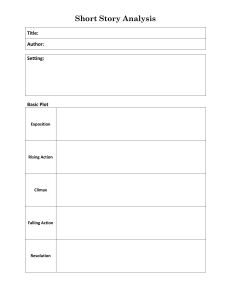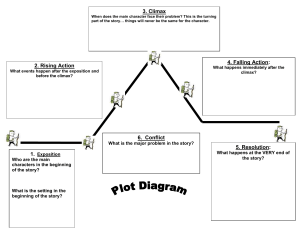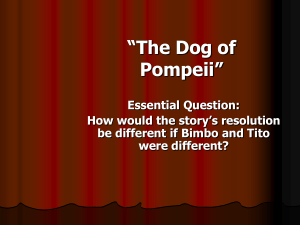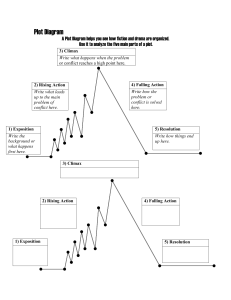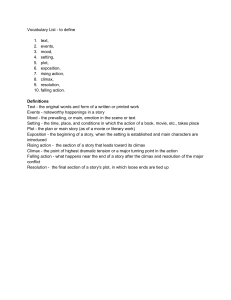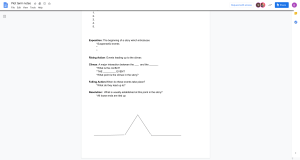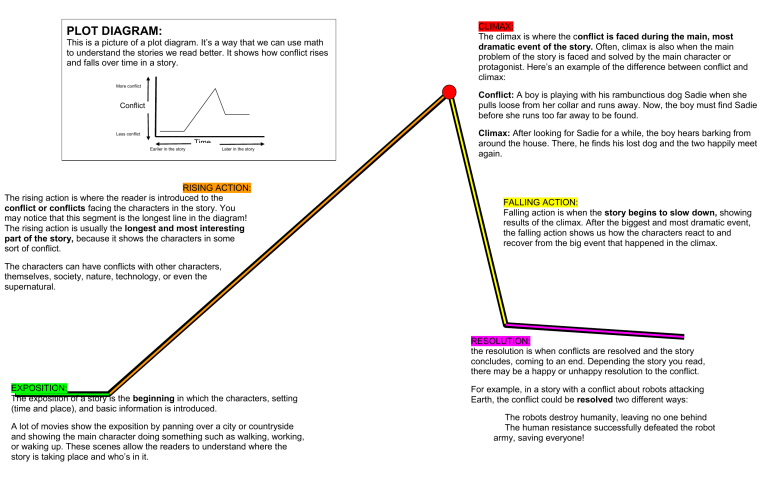
PLOT DIAGRAM: This is a picture of a plot diagram. It’s a way that we can use math to understand the stories we read better. It shows how conflict rises and falls over time in a story. CLIMAX: The climax is where the conflict is faced during the main, most dramatic event of the story. Often, climax is also when the main problem of the story is faced and solved by the main character or protagonist. Here’s an example of the difference between conflict and climax: More conflict Conflict: A boy is playing with his rambunctious dog Sadie when she pulls loose from her collar and runs away. Now, the boy must find Sadie before she runs too far away to be found. Conflict Less conflict Time Earlier in the story Later in the story RISING ACTION: The rising action is where the reader is introduced to the conflict or conflicts facing the characters in the story. You may notice that this segment is the longest line in the diagram! The rising action is usually the longest and most interesting part of the story, because it shows the characters in some sort of conflict. Climax: After looking for Sadie for a while, the boy hears barking from around the house. There, he finds his lost dog and the two happily meet again. FALLING ACTION: Falling action is when the story begins to slow down, showing results of the climax. After the biggest and most dramatic event, the falling action shows us how the characters react to and recover from the big event that happened in the climax. The characters can have conflicts with other characters, themselves, society, nature, technology, or even the supernatural. RESOLUTION: the resolution is when conflicts are resolved and the story concludes, coming to an end. Depending the story you read, there may be a happy or unhappy resolution to the conflict. EXPOSITION: The exposition of a story is the beginning in which the characters, setting (time and place), and basic information is introduced. A lot of movies show the exposition by panning over a city or countryside and showing the main character doing something such as walking, working, or waking up. These scenes allow the readers to understand where the story is taking place and who’s in it. For example, in a story with a conflict about robots attacking Earth, the conflict could be resolved two different ways: The robots destroy humanity, leaving no one behind The human resistance successfully defeated the robot army, saving everyone!
